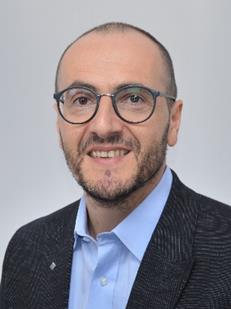报告人:Prof. Dr. Armando Rastelli(Institute of Semiconductor and Solid State Physics, Johannes Kepler University, Linz, Austria)
邀请人:袁学勇
时间:2021年9月8日(周三)下午15:00
链接:https://meeting.tencent.com/dm/TSRrBUqRuGik?rs=25会议ID: 939928620会议密码:211189
摘要: State-of-the-art quantum key distribution systems are based on single photons generated by lasers. These implementations suffer from range limitations and security loopholes, which require expensive adaptation. The use of entangled photon pairs may substantially alleviate the security threads while allowing for basically arbitrary transmission distances when embedded in quantum repeater schemes. In contrast to probabilistic sources, Semiconductor quantum dots (QDs) are capable of emitting highly entangled photon pairs with ultra-low multi-pair emission probability even at maximum brightness.
In this seminar, we will discuss the properties of QDs based on the (Al)GaAs material platform followed by the implementation of the BBM92 protocol using a quantum dot source with a polarization-entanglement fidelity as high as 0.97(1). For a proof of principle, the quantum key generation was performed between two buildings of the JKU campus, connected by 350 meter long fiber, resulting in an average key rate of 135 bits/s and a qubit error rate of 0.019 over a time span of 13 hours, without resorting to time- or frequency-filtering techniques. By embedding the QDs in state-of-the-art photonic structures, key generation rates in the hundreds of Mbit/s range are at reach.
报告人简介:

Prof. Armando Rastelli heads the Semiconductor Physics at the Johannes Kepler University of Linz, Austria since 2012. He obtained his PhD in Physics from the University of Pavia, Italy, in 2003. During his PhD he was research assistant at the ETH Zürich, Switzerland, and Marie-Curie-Fellow at the Technical University of Tampere, Finland. From 2003 to 2007 he was first PostDoc and then group leader at the Max-Planck-Institute of Stuttgart, Germany, and, till 2012 at the Leibniz Institute of Dresden, Germany. In 2019 he was elected corresponding member of the Austrian Academy of Sciences. Throughout his career, he has been developing new methods to obtain, study, and control epitaxial quantum dots. The main current focus is on the optimization of quantum dots as quantum light sources and their post-growth tuning via microstructured piezoelectric actuators for applications in photonic quantum technologies. He is coauthor of more than 230 peer-reviewed papers with more than 10000 citations and has given 100 invited talks on the research activities of his group.
欢迎老师和同学参加!
